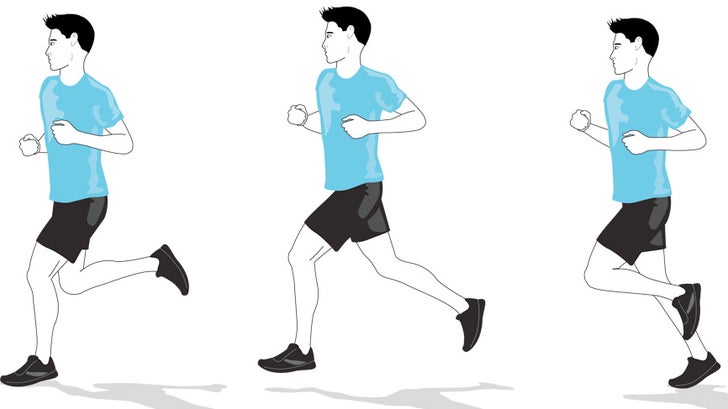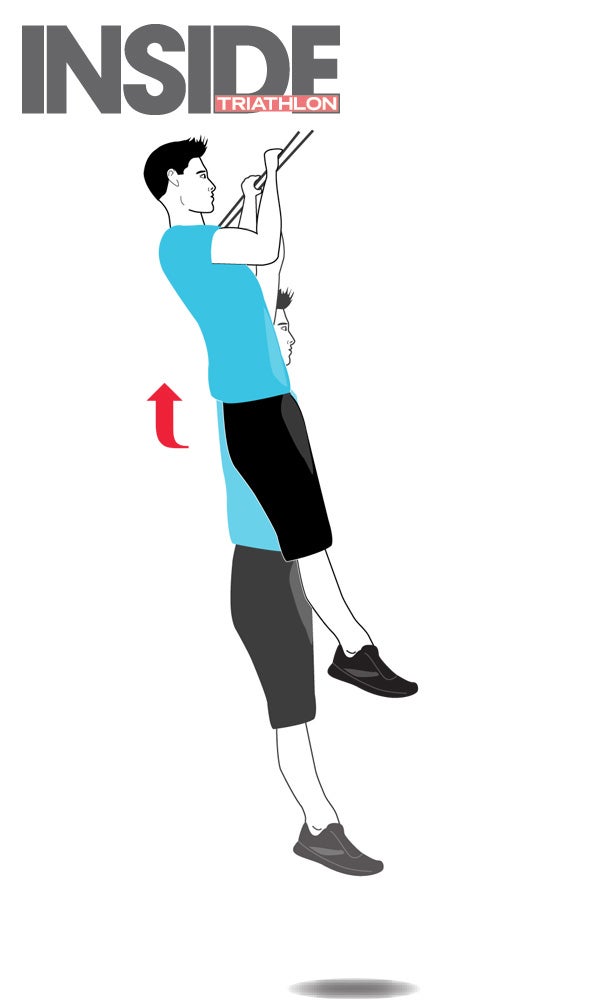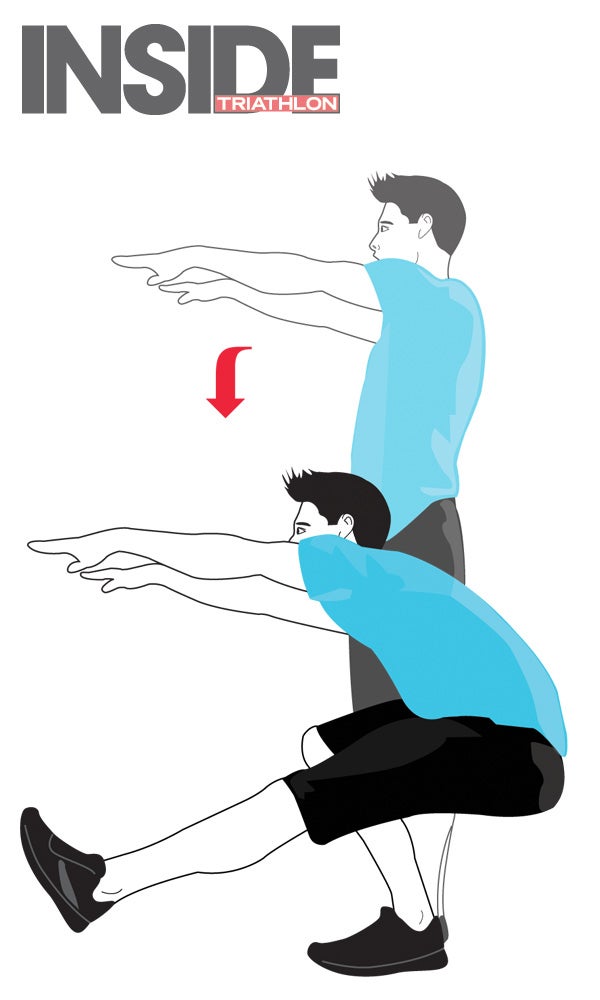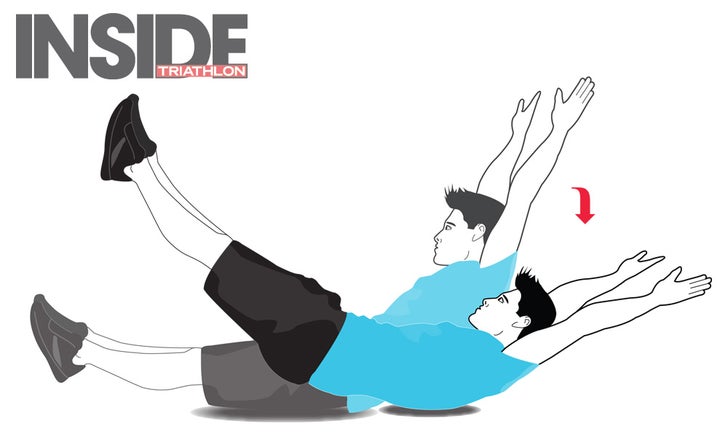New perk! Get after it with local recommendations just for you. Discover nearby events, routes out your door, and hidden gems when you sign up for the Local Running Drop.




Is improved biomechanics the untapped frontier for performance and injury prevention?
This article originally appeared in the March/April 2012 issue of Inside Triathlon magazine.
In the 1980s, as triathlon grew rapidly around the globe, it defined itself as an endurance sport hungry for any and all avenues that led to more performance. Unlike road cycling and distance running, triathlon was free of any lore or culture that might cast disdain toward new ideas on how to train, what to eat or what gear to use. Triathlon took on a reputation for innovation and experiment. Runners and cyclists focused mostly on the training, while triathletes attempted to enhance training and overall performance with what were then newfangled ideas such as the Pritikin Diet, salt tablets and aerobars.
Today, we continue to see this Formula-One-like thirst for performance in triathlon, and the top-tier professionals have left little to chance when it comes to exhausting what sports science can add to performance. Three-time Ironman world champ Craig Alexander is famous for his body temperature versus heat and humidity experiments.
It may have all started with Dave Scott. Scott, who dominated the Hawaii Ironman with six wins in the 1980s, had a tremendous effect on triathlon’s obsession with nutrition as a tool of high performance. Although he’s altered his diet since to include fish and more healthy fats, in the 1980s he followed, to great fanfare, a very strict vegetarian high-carb/low-fat diet modeled off of the Pritikin plan. Scott’s dedication, coupled with his mastery of the marquee race in the sport, instilled an obsession for performance-based nutrition within our sport that continues to this day.
Eighteen years after his last race in Kona, Scott continues to press forward into new frontiers. Always fond of incorporating ancillary forms of training into a triathlon program—Scott believes that his time in the weight room is what allowed him to transform his weak run mechanics into a strength—he coached Chrissie Wellington to her fourth Kona victory, in 2011, despite the ravages of a bike wreck she suffered within a month of race day. Wellington’s adherence to a lower volume, higher quality training year, as prescribed by Scott, was bolstered by routine visits to the gym—up to three and four times per week—for strength exercises and weight training. Wellington was likely able to overcome the inefficiencies caused by her injuries partly because of this foundation of strength training.
The point to be put under a microscope for today’s generation of triathletes relates to this fundamental observation: Despite injuries serious enough to visibly hobble her stride, Wellington set a personal record for her marathon in Kona. Rather than weaknesses created by the injuries leading to a complete disintegration of her ability to perform, particularly under the stress of the pooling fatigue that comes with a day of racing an Ironman, Wellington kept moving at a swift pace. Surely this was a testament to her preternatural mental strength and desire to win. But considering the amount of ancillary strength and flexibility training injected into her program, a fair question to ask is this: To what degree did the extra credit she earned in the weight room allow her to hold off a breakdown in her ability to move? And moreover, what is the value to all triathletes in not only good biomechanics, but also in preparing the body so that it can sustain those biomechanics under the load and fatigue incurred in a long race?
One of the most powerful discussions ignited by the book “Born to Run” by Christopher McDougall came from his declaration that movement problems are the root cause of most running injuries, whether they are from overbuilt running shoes (limiting the foot’s range of motion) or running form that is defined by heel striking. In the book McDougall reports that 80 percent of runners deal with at least one injury per year. While the heart of the book centers on the culture of the Tarahumara Indians, the reader follows McDougall in his personal journey from being chronically injured to the starting line of a trail ultra-marathon. In addition to switching to a neutral running shoe, McDougall is drilled to overhaul his running stride from that of a reckless plod to a light, nimble foot strike. While most of the attention on McDougall’s book has centered on barefoot running or minimalistic running shoes, the book has also ignited interest in running form workshops such as Dr. Nicholas Romanov’s “The Pose Method of Running.”
The intent of the Pose Method is to develop running form in the same way you would skills to play an instrument. In Romanov’s view, optimal running form is a matter of the application of physics and human biology. The word “pose” refers to the key positions in a running stride—like the positions, or poses, you’d find in ballet. Romanov uses drills to teach a runner what, in terms of physics, these poses are and that the most efficient path forward is to move from position to position. Perhaps the most valuable development to happen for a heel-striking runner is that the change will give the athlete the benefit of relying on larger, more powerful muscles—such as the glutes and hamstrings of the posterior chain—as opposed to smaller muscles such as the hip flexors.
In other words, Born to Run has opened up the discussion on attending to running like you would a skill as opposed to just hauling in as much raw mileage as you can. As Romanov explains, you can see and hear the difference between the best runners and the slow runners by hanging out at mile 2 of a road race. The fastest runners will have peppery, high-cadence running strides. You’ll barely hear their feet touch the ground. Watch long enough and as the slower runners go by you’ll notice the ever-increasing volume of feet slapping the pavement, a transition from mid-foot or forefoot striking to hellacious heel strikes and slower and slower cadences.
The topic of biomechanics and running injuries pales in size compared to biomechanics and triathlon, which is why improvements in movement and biomechanics, including the development of optimal positions, motor recruitment patterns and skills, will yield not only a thicker buffer against injuries but huge potential gains in triathlon performance.
While Scott, McDougall and Romanov are good resources for information on biomechanics and performance, when it comes to this topic, there are two names that stand out above all the rest: Kelly Starrett and Carl Paoli, who have emerged as leading movement and mobility coaches. They have worked with an array of athletes, from Tour de France cyclists such as Levi Leipheimer, Olympic gold medalist rowers, elite triathletes and runners to world-record-holding powerlifters, and they have ventured outside of sports and helped people ranging from soldiers in the U.S. Special Forces to professional ballet dancers. Starrett is a physical therapist and former world-class kayaker and has established a global following through the video blog Mobilitywod.com. Paoli is a former world-class gymnast and runs Gymnasticswod.com. Starrett and Paoli have collaborated on identifying and teaching a fundamental approach to harnessing the possibilities inherent in movement, mobility and position, in conjunction with strength, power and endurance, which they believe is the foundation to all sports.
“Triathletes can suffer,” Starrett said. “They are highly motivated and they really, really suffer. Whoever suffers the most can win. But there’s a rich world of performance potential that lies deep within the world of movement and mechanics. What we want to do when we work with a triathlete is make the invisible visible. Because what we need triathletes to understand is that if your muscles are tight, if you can’t get into and hold a good position in the swim, on the bike or during the run, you are going to be making movement compromises. You’re well into the bike portion of the race and because your back is cramping up, or your shoulders and neck are hurting, you can no longer maintain an aero position and you have to sit up on the saddle. That’s just one example. If you fail to optimize your positions, your range of motion and your movement, you will be leaving untapped performance on the table.”
Starrett adds that such compromises can vividly reveal themselves in the last portion of the race when inefficient positioning takes its toll and the athlete’s performance degrades when it counts most.
“The best athletes, when it gets difficult, when exhaustion begins to set in, their positioning improves,” he said. “When they get tired they default into better mechanics.”
“Consider this,” Paoli said. “If through movement training a triathlete can gain a 3 percent improvement in efficiency, that’s a gold mine in terms of performance in an eight- or 10-hour race.”
RELATED: No Rest For The Injured
Starrett and Paoli described recent work they did with a top collegiate swimmer. To get a picture of her strengths and weaknesses in terms of movement, they had her perform a pushup. She was unable to hold the top position of the pushup for more than a few seconds. This is an example of making the invisible visible, they say: An athlete with national class credentials who can’t do a pushup has missing links in terms of potential performance. She’s managed to swim around a basic physical weakness in her body, and this means if she repairs the problem she’ll have access to more strength, speed and performance on race day and for a longer duration.
“A pushup is not a magic chest exercise,” Starrett said. “It’s a challenge to maintain dynamic trunk position and create torque through the shoulder. Do pushups properly and you get all this, plus you get your heart rate up. You get 10 things out of that one movement. Swimmers, runners, triathletes—they should all be able to perform the basics when it comes to movement and with a full range of motion. Anything less and you’re not being all you can be.”
Starrett advises athletes from whatever discipline to consider the gym as a lab.
“Time in a gym should be far more than simply going there to get stronger. It’s a place where you can safely test your range of motion under a load. A gym should be the lab where you can root out faults and missing links—making the invisible visible. These are the faults and missing links that drain your performance and can develop into injury.”
So what’s the takeaway of this discussion? For triathletes, whether your specialty is the sprint, Olympic, half-iron or full-iron distance, the more you invest in refining and developing your quality of movement and expression of power, the faster you’re going to go.
As such, here are the basics of Starrett and Paoli’s philosophy on biomechanics and movement. Learn them and use them, and they will help you reach your triathlon goals.
Philosophy #1: The greatest expression of force generated and controlled by your body comes from the hips. Second is the shoulders. In running, for example, faulty hip mechanics lead to a loss of potential explosive power from the hips and a transition to more emphasis on the smaller muscles of the extremities, such as the quadriceps.
Philosophy #2: Dysfunction in the hips or shoulders can lead to injuries in the extremities, such as the knees, ankles, feet, wrists, hamstrings and calves. In other words, weakness and imbalances in the hips or shoulders will place additional or inappropriate stress on down the chain. This can turn into an ugly cycle of chronic injury as well. Indeed, because of an athlete’s psychological intent to perform, the body will reroute power around old joint and tissue injuries. The result is a suboptimal chain of power, with weak links and weak range of motion, which saps power and performance.
Philosophy #3: The ideal flow of power is from the core muscles of the body to the extremities. Starrett says that with the body properly organized in a neutral position, you’ll channel more force from the hips and the shoulders into propulsion. Think of the human body as a machine the way an engineer thinks of a motorcycle or a rocket. Don’t leave efficiency to chance.
Philosophy #4: The value of achieving good positions in swimming, biking and running is that you’ll enable the most powerful and efficient motor recruitment patterns and make the most of what your muscles have to offer. The better you’re prepared in this domain before the race, the more you’ll be able to use it when you begin to redline in a race effort and face muscular exhaustion. The more comprehensive your ability to be as efficient as possible in all situations (up and down hills, into or across strong currents in the swim, into headwinds on the bike) the more you can have saved up for the final miles of the race.
Philosophy #5: The key to achieving an optimal flow of power from the core to the extremities is midline stabilization. Starrett and Paoli will ask you to put out your arm and imagine the elbow is the trunk of your body. With the muscles of the arm relaxed, what sort of brace can you make with the arm? Practically none. With a neutral spine, organized into a stiff trunk by engaging the core muscles into what’s referred to as “midline stabilization,” overextension and under-extension can be prevented. “Think of a rigid spine as a big lever arm. With a stiff trunk you can recruit the muscles of the hips and muscles of the shoulders more efficiently,” Starrett said. Your main draw of power then comes from the most powerful muscles, and extremities pitch in down the line.
Philosophy #6: If you don’t have full range of motion in a joint you’re leaving performance on the table and opening yourself up to injury. Starrett said, “If you lose hip control, if you lose shoulder control, you’re going to be vulnerable to injury. People think they have a wrist or ankle problem when it’s really a shoulder or hip problem. Why does my knee hurt? Why is my wrist destroyed? The answer may be found in the reason that you can’t do a body-weight squat without bending your spine three times.”
Philosophy #7: Limited range of motion is costing you—endeavor to fix it. “Let’s say you’re missing 20 percent of your posterior range of motion,” Starrett said. “First off, how much energy does it cost you just to be you? If you open up that hip, the cost will go down. And in a race you’ll have taken the handbrake off by 20 percent. Being efficient costs less. It frees up more energy to be put in other places.”
Philosophy #8: Tissue health through proper hydration and nutrition is vital. Not just in a race, but every day, properly hydrated tissues will be more elastic and recover faster from training and racing. Starrett also advises adhering to a diet of high-quality meat, fish, poultry, vegetables and fruit, and staying away from junk. If you feel you need to wolf down a pizza to get in calories, he says you’ve got it wrong. “You don’t need to eat the pizza,” he said. “You need to eat chicken breast and a shot of olive oil. Food is the most powerful drug on the planet. Use it.”
RELATED: Make Great Strides
Bodyweight Basics for Improved Movement
Practicing and mastering the following three movements will give you a solid start toward developing power-enriching strength and mobility.
Pistols
Place feet hip-width apart and pointing slightly out. Consciously engage your glute and ab muscles—tighten the muscles around your core but continue to breathe. Lift one leg in front of you with leg straight. Descend by pushing your hips backward and downward. Descend until hip crease falls below knee level (you may need to work toward this depth over a period of weeks). Ascend by pushing hips back and up. Keep knee from collapsing inward during this exercise. Work to keep it out and aligned with foot.
Pullup
Start in a dead hang position with shoulders next to your ears. Engage the muscles around the trunk, glutes and abs. Initiate movement by pulling shoulder blades back and down and keeping the neck long. Keep butt and stomach muscles engaged through movement. This is critical to getting the desired functional movement effect! Follow through with a pull that directs your chest toward the bar. When chin clears bar return via the same path, core continuously engaged. You can purchase pull-up assist bands if you cannot do a pull-up by yourself.
Hollow Rocks
With lower back touching the ground, point legs straight and tight together, point toes, and extend arms straight. Engage abs, glutes, upper thigh muscles. Start rocking back and forth without allowing the shape to break at any point.
Visit Gymnasticswod.com for video instruction and pointers on how to progress to these movements.
A Movement and Mobility Toolkit
If Starrett and Paoli’s philosophy sounds like something you’d like to explore, you can begin with the following movement and mobility toolkit, along with what they outline as the fundamental exercises you can begin working on to improve your mobility.
Hydrate throughout the day, every day.
Spike your water with electrolyte tablets to enhance the absorption of water into your body’s tissues.
Trigger Point Therapy
Trigger Point Therapy offers tools and techniques for recovery, restoration and injury prevention.
Mobilitywod.com
Kelly Starrett’s video blog has hundreds of workouts that take 10 minutes or less and guide you toward working on tissue, joint and overall mobility issues piece by piece. Starrett doesn’t just show you what to do but why you should do it. If you have a particular problem (hamstrings, feet, shoulders) do a keyword search and look for an appropriate blog post.
Gymnasticswod.com
Carl Paoli’s archive centers on skill transfer exercises and progressions that he’s derived from gymnastics and are of value to athletes of any sport. Paoli hammers home the idea that midline stability is the crucial tool for an ideal flow of power throughout just about any kind of movement you can imagine. Spending a few minutes a day on Paoli’s blog will help a triathlete instill midline stability into his or her daily life as well as sport.
Video: The Biomechanics Of Lukas Verzbicas’ Bike Fit